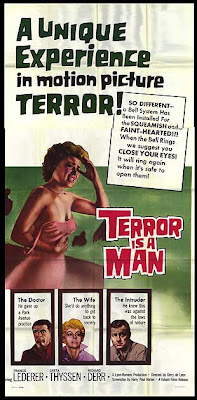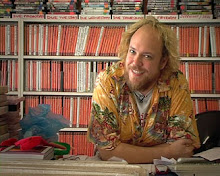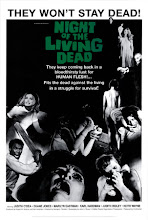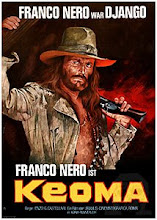 For Y’ur Height Only
For Y’ur Height Only Philippines 1981 colour
aka For Your Height Only
Director Eddie Nicart Writer Cora Caballes Producer Peter M. Caballes
Cast Weng Weng (Agent 00), Tony Ferrer (Chief), Carmi Martin, Beth Sandoval
 The 1981 Manila International Film Festival was designed by First Lady Imelda Marcos as an elaborate showcase of Filipino culture. To everyone’s horror, the only film that sold to the world was a midget spy film – a miniature mockery of Western pop iconography, and a joyously naïve celebration of Filipino Goon Cinema - called For Y’ur Height Only. Its star, a two-foot nine primordial dwarf named Weng Weng, became the most famous Filipino celebrity of his generation both inside the Philippines and abroad, yet curiously, less than 30 years later, the real Weng Weng story has all but been forgotten even by those who worked alongside him.
The 1981 Manila International Film Festival was designed by First Lady Imelda Marcos as an elaborate showcase of Filipino culture. To everyone’s horror, the only film that sold to the world was a midget spy film – a miniature mockery of Western pop iconography, and a joyously naïve celebration of Filipino Goon Cinema - called For Y’ur Height Only. Its star, a two-foot nine primordial dwarf named Weng Weng, became the most famous Filipino celebrity of his generation both inside the Philippines and abroad, yet curiously, less than 30 years later, the real Weng Weng story has all but been forgotten even by those who worked alongside him.
 He’s listed in the Guinness Book of Records as, at just 83 cm (2 ft 9 in) tall, the shortest ever lead actor in a motion picture. That’s as far as the official story goes - blame faulty or selective memories, or a fad-driven culture that never pauses long enough to ask “who?”, “what?” or “why?” - truth is, the story of Weng Weng has become one of the Philippines’ greatest urban legends, and the wildest and wooliest of stories fill in the gaps. Stand-up comedian married to a porn actress, real-life secret agent, hit karaoke chanteur with Imelda, the flow is endless. Once the horseshit hardens, it’s almost impossible to extricate truth from fiction, the right from the rot. Was he truly a national disgrace? Or was he small enough to have slipped between the cracks of film history?
He’s listed in the Guinness Book of Records as, at just 83 cm (2 ft 9 in) tall, the shortest ever lead actor in a motion picture. That’s as far as the official story goes - blame faulty or selective memories, or a fad-driven culture that never pauses long enough to ask “who?”, “what?” or “why?” - truth is, the story of Weng Weng has become one of the Philippines’ greatest urban legends, and the wildest and wooliest of stories fill in the gaps. Stand-up comedian married to a porn actress, real-life secret agent, hit karaoke chanteur with Imelda, the flow is endless. Once the horseshit hardens, it’s almost impossible to extricate truth from fiction, the right from the rot. Was he truly a national disgrace? Or was he small enough to have slipped between the cracks of film history?
 It’s taken me over a year, three visits to the Philippines and more than 40 interviews with the people closest to him, including his only surviving relative, brother Celing de la Cruz, to glean the following information. There are still enormous gaps, but this is the most detailed portrait of Weng Weng I am able to put together; my documentary THE SEARCH FOR WENG WENG, screening at this year’s Brisbane International Film Festival on August 5th, is as complete as it ever will be.
It’s taken me over a year, three visits to the Philippines and more than 40 interviews with the people closest to him, including his only surviving relative, brother Celing de la Cruz, to glean the following information. There are still enormous gaps, but this is the most detailed portrait of Weng Weng I am able to put together; my documentary THE SEARCH FOR WENG WENG, screening at this year’s Brisbane International Film Festival on August 5th, is as complete as it ever will be.
 Weng Weng was born Ernesto de la Cruz, the youngest of five brothers, on 7th September 1957 in Balacaran, a district of Pasay City (now part of the sprawling 17-city Metro Manila). A condition known as primordial dwarfism caused him to be born, in the words of his brother Celing, “no bigger than a coke bottle”, and he spent the first 12 months of his life in an incubator. He was not expected to live. Naturally, it was declared a miracle when he did, and in a country that venerates miraculous acts of faith, it is no surprise that Weng Weng was dressed as the Christ-child figure at the head of Baclaran’s yearly Santo Nino parade.
Weng Weng was born Ernesto de la Cruz, the youngest of five brothers, on 7th September 1957 in Balacaran, a district of Pasay City (now part of the sprawling 17-city Metro Manila). A condition known as primordial dwarfism caused him to be born, in the words of his brother Celing, “no bigger than a coke bottle”, and he spent the first 12 months of his life in an incubator. He was not expected to live. Naturally, it was declared a miracle when he did, and in a country that venerates miraculous acts of faith, it is no surprise that Weng Weng was dressed as the Christ-child figure at the head of Baclaran’s yearly Santo Nino parade.
 A cheerfully mischievous child, his family nicknamed him Weng Weng, an epiphet usually reserved for toy dogs. He was obsessed with martial arts and trained almost daily, until his instructor contacted film producer Peter Caballes and said, “You just have to see THIS.” Peter and his wife, the successful businesswoman Cora Ridon Caballes, took Weng Weng on the rounds of film producers, including Bobby A. Suarez, whose novelty kiddie films The Bionic Boy (1977) and Dynamite Johnson: The Bionic Boy Part 2 (1978) were already international hits. Suarez turned down the idea of Weng Weng as a midget Superman, but successful indie producer/director Luis San Juan, who specialized in kung fu films for the export market, cast Weng Weng in a cameo in a film whose name is now lost to the sands of time. Peter Caballes then introduced Weng Weng to the King of Philippines Comedy, Dolphy, who cast him as his kung-fu kicking sidekick in his spy caper The Quick Brown Fox (1980) and western parody Da Best In Da West (1981). Weng Weng, meanwhile, was a frequent visitor of the Marcos family at the Presidential Palace, where he was made an honorary Secret Agent by future President General Ramos, and was presented with a badge and a 25-callibre pistol.
A cheerfully mischievous child, his family nicknamed him Weng Weng, an epiphet usually reserved for toy dogs. He was obsessed with martial arts and trained almost daily, until his instructor contacted film producer Peter Caballes and said, “You just have to see THIS.” Peter and his wife, the successful businesswoman Cora Ridon Caballes, took Weng Weng on the rounds of film producers, including Bobby A. Suarez, whose novelty kiddie films The Bionic Boy (1977) and Dynamite Johnson: The Bionic Boy Part 2 (1978) were already international hits. Suarez turned down the idea of Weng Weng as a midget Superman, but successful indie producer/director Luis San Juan, who specialized in kung fu films for the export market, cast Weng Weng in a cameo in a film whose name is now lost to the sands of time. Peter Caballes then introduced Weng Weng to the King of Philippines Comedy, Dolphy, who cast him as his kung-fu kicking sidekick in his spy caper The Quick Brown Fox (1980) and western parody Da Best In Da West (1981). Weng Weng, meanwhile, was a frequent visitor of the Marcos family at the Presidential Palace, where he was made an honorary Secret Agent by future President General Ramos, and was presented with a badge and a 25-callibre pistol.
 This act may have been the direct inspiration for Weng Weng’s first starring role as Agent OO in the James Bond parody For Y’ur Height Only, produced by Peter and written by Cora Caballes for their company Liliw Productions. Eddie Nicart, renowned stunt director for the SOS Daredevils, trained Weng Weng every day for three months to be a professional stuntman, and was given his first opportunity to direct. And what a job he did - over the astounding course of the film Agent 00, our curious little brown hero with a receding Ramones bowl cut and an all-white suit and boater, cracks an international drug ring, gets the girl, loses the girl (“Irmaaaaa!”) and infiltrates the secret lair of evil criminal mastermind Mr Giant (played, appropriately enough, by a dwarf), all with an armful of gadgets and his famous trick of punching someone in the balls, then running between their legs.
This act may have been the direct inspiration for Weng Weng’s first starring role as Agent OO in the James Bond parody For Y’ur Height Only, produced by Peter and written by Cora Caballes for their company Liliw Productions. Eddie Nicart, renowned stunt director for the SOS Daredevils, trained Weng Weng every day for three months to be a professional stuntman, and was given his first opportunity to direct. And what a job he did - over the astounding course of the film Agent 00, our curious little brown hero with a receding Ramones bowl cut and an all-white suit and boater, cracks an international drug ring, gets the girl, loses the girl (“Irmaaaaa!”) and infiltrates the secret lair of evil criminal mastermind Mr Giant (played, appropriately enough, by a dwarf), all with an armful of gadgets and his famous trick of punching someone in the balls, then running between their legs.


 It’s hard to pin down the appeal of For Y’ur Height Only. It’s not just the novelty of seeing a Filipino midget pretending to be a gun expert and ladies’ man, or the inexplicable thrill of watching bad (and I mean BAD) kung fu movies. Maybe it’s the inadvertently genius deconstruction of both Western action films and their Pinoy counterparts, surreal pot-addled dubbing by American expats (and Apocalypse Now survivors) Jim Gaines and Nick Nicholson, or inspired casting of every Bad Guy (or “Goon”) still alive at the time, and the James Bond of the Philippines himself, Tony Ferrer aka Agent X44, as Weng Weng’s boss. Perhaps it’s a combination of its constituent elements, or something new altogether. It all adds up to an absurdist masterpiece of gloriously bad cinema, one which was sold all over the world and became one of the Philippines’ most successful exports.
It’s hard to pin down the appeal of For Y’ur Height Only. It’s not just the novelty of seeing a Filipino midget pretending to be a gun expert and ladies’ man, or the inexplicable thrill of watching bad (and I mean BAD) kung fu movies. Maybe it’s the inadvertently genius deconstruction of both Western action films and their Pinoy counterparts, surreal pot-addled dubbing by American expats (and Apocalypse Now survivors) Jim Gaines and Nick Nicholson, or inspired casting of every Bad Guy (or “Goon”) still alive at the time, and the James Bond of the Philippines himself, Tony Ferrer aka Agent X44, as Weng Weng’s boss. Perhaps it’s a combination of its constituent elements, or something new altogether. It all adds up to an absurdist masterpiece of gloriously bad cinema, one which was sold all over the world and became one of the Philippines’ most successful exports.
 The more we screened the film on Trash Video’s film tours around Australia, the more I realized the power of Weng Weng to transform a jaded, cynical audience. “We love Weng Weng!” they would chant after the film, and each time I sat through the movie with a new set of faces, I would experience once again the sheer joy of watching the film for the first time. And now it’s your turn. Next week we present the 1982 sequel The Impossible Kid and give you the Weng Weng Story part 2, but now here is the first appearance of the incredible Weng Weng in For Y’ur Height Only.
The more we screened the film on Trash Video’s film tours around Australia, the more I realized the power of Weng Weng to transform a jaded, cynical audience. “We love Weng Weng!” they would chant after the film, and each time I sat through the movie with a new set of faces, I would experience once again the sheer joy of watching the film for the first time. And now it’s your turn. Next week we present the 1982 sequel The Impossible Kid and give you the Weng Weng Story part 2, but now here is the first appearance of the incredible Weng Weng in For Y’ur Height Only.
 Mad Doctor Of Blood Island
Mad Doctor Of Blood Island
 USA/Philippines 1968 colour
USA/Philippines 1968 colour
aka Blood Doctor, Grave Desires, Tomb Of The Living Dead
Directors Gerry de Leon, Eddie Romero Writer Reuben Canoy Producers Kane W. Lynn, Beverly Miller, Eddie Romero
Cast John Ashley (Dr Bill Foster), Angelique Pettyjohn (Sheila Willard), Ronald Remy (Dr.Lorca), Alicia Alonzo (Marla)
A few months ago on Schlock Treatment we screened the Filipino drive-in classic Brides Of Blood, starring former American teen heartthrob John Ashley and a bevy of naked virgin beauties being sacrificed to a green oozing monster. It must have been the heady cocktail of sleaze and tropical breeze that caught the imagination of the drive-in audience; Brides... would be rerun a number of times and create enough buzz for directors Eddie Romero, Gerry de Leon and producer Kane Lynn to return to Blood Island to make a pseudo-sequel, this time with more sleaze, more ooze, more salsa on the enchilada.
 The result was Mad Doctor Of Blood Island, and Hemisphere Pictures had an even bigger hit. John Ashley is back as Dr Bill Foster, investigating the outrageous claim that some of the inhabitants have green blood. Along for the ride is notorious 60s sexploitation star Angelique Pettyjohn as Sheila Willard, looking for her lost father who’s now the island barfly. Ashley stumbles on the ghoulish vivisection antics of Dr Lorca (played by Ronald Remy, who you may remember as the suave bald-headed vampire doctor in The Blood Drinkers); Lorca’s experiments have been turning the locals including his own wife into crusty green-skinned chlorophyll freaks craving blood - and more!
The result was Mad Doctor Of Blood Island, and Hemisphere Pictures had an even bigger hit. John Ashley is back as Dr Bill Foster, investigating the outrageous claim that some of the inhabitants have green blood. Along for the ride is notorious 60s sexploitation star Angelique Pettyjohn as Sheila Willard, looking for her lost father who’s now the island barfly. Ashley stumbles on the ghoulish vivisection antics of Dr Lorca (played by Ronald Remy, who you may remember as the suave bald-headed vampire doctor in The Blood Drinkers); Lorca’s experiments have been turning the locals including his own wife into crusty green-skinned chlorophyll freaks craving blood - and more!
 Mad Doctor Of Blood Island is your quintessential drive-in experience from the late 60s: so much blood, so much flesh, so much cheese, and so many zoom effects it feels like it was filmed in throb-o-vision. Always with an eye for exploitation, Hemisphere filmed a prologue “Oath of the Green Blood”, where movie patrons were instructed to repeat the sacred words and drink from a plastic sachet of green muck that was supposed to be lime syrup, but was in fact a toxic gel that reportedly made publicist Sam Sherman sick for days!
Mad Doctor Of Blood Island is your quintessential drive-in experience from the late 60s: so much blood, so much flesh, so much cheese, and so many zoom effects it feels like it was filmed in throb-o-vision. Always with an eye for exploitation, Hemisphere filmed a prologue “Oath of the Green Blood”, where movie patrons were instructed to repeat the sacred words and drink from a plastic sachet of green muck that was supposed to be lime syrup, but was in fact a toxic gel that reportedly made publicist Sam Sherman sick for days!
 Now you can duplicate the drive-in experience in your own home: grab a bottle of undiluted lime cordial and repeat after me...
Now you can duplicate the drive-in experience in your own home: grab a bottle of undiluted lime cordial and repeat after me...
"I, a living, breathing creature of the cosmic entity am now ready to enter the realm of those chosen to be allowed to drink of the Mystic Emerald fluids herein offered. I join the Order of Green Blood with an open mind, and through this liquid's powers am now prepared to safely view the unnatural green-blooded ones without fear of contamination."
 Next week we return to Blood Island for a third and final time with Beast Of Blood, but for now, it’s time for the good doctor to make a housecall. There he is at the door: The Mad Doctor Of Blood Island.
Next week we return to Blood Island for a third and final time with Beast Of Blood, but for now, it’s time for the good doctor to make a housecall. There he is at the door: The Mad Doctor Of Blood Island.
 Flight To Fury
Flight To Fury Under the watchful eye of Lippert’s producer Fred Roos, Hellman shot both films starting with Back Door To Hell with, predictably, very little money, a back-breaking schedule and the inherent chaos of the
Under the watchful eye of Lippert’s producer Fred Roos, Hellman shot both films starting with Back Door To Hell with, predictably, very little money, a back-breaking schedule and the inherent chaos of the  Nicholson, of course, is the Creator of Flight To Fury’s paranoid microcosmos and, as such, gives himself the most intriguing character and the film's best lines ("Are you interested in death?"). In typical Filipino fashion, the film’s co-producer Eddie Romero and frequent collaborator Mike Parsons made a local version called Cordillera after the American cast left, using local actors and his own Tagalog script. In a country where 90% of their film history has not survived, this version has not surprisingly disappeared forever. But we are left with the Nicholson/Hellman version, perhaps the finest moment from their combined early careers: the 1964 Flight To Fury.
Nicholson, of course, is the Creator of Flight To Fury’s paranoid microcosmos and, as such, gives himself the most intriguing character and the film's best lines ("Are you interested in death?"). In typical Filipino fashion, the film’s co-producer Eddie Romero and frequent collaborator Mike Parsons made a local version called Cordillera after the American cast left, using local actors and his own Tagalog script. In a country where 90% of their film history has not survived, this version has not surprisingly disappeared forever. But we are left with the Nicholson/Hellman version, perhaps the finest moment from their combined early careers: the 1964 Flight To Fury. Now to our second film, Back Door To Hell, a taut World War 2 drama with a similar look to the other b&w war films made in the Philippines at the time by Eddie Romero and American B actor George Montgomery. Unlike those films, however, there’s no rousing gung-ho speeches here; it's made clear from the start these men, much like the director himself and Francis Ford Coppola after him, are slowly falling to pieces in the Filipino jungle. The Apocalypse starts now.
Now to our second film, Back Door To Hell, a taut World War 2 drama with a similar look to the other b&w war films made in the Philippines at the time by Eddie Romero and American B actor George Montgomery. Unlike those films, however, there’s no rousing gung-ho speeches here; it's made clear from the start these men, much like the director himself and Francis Ford Coppola after him, are slowly falling to pieces in the Filipino jungle. The Apocalypse starts now. Hellman plunges straight into the action: Lietenant Craig (Jimmie Rodgers) is US Army Intelligence leading a small band of troops towards a Japanese radio tower to broadcast vital information to the invading forces about to recapture the
Hellman plunges straight into the action: Lietenant Craig (Jimmie Rodgers) is US Army Intelligence leading a small band of troops towards a Japanese radio tower to broadcast vital information to the invading forces about to recapture the  Stripped of most of its military hardware and pyrotechnics, the film is more a claustrophobic deconstruction of a war film, an exercise in rapid-fire montage filled with simple, cost-effective visuals and quiet flourishes (an incredible 360 degree pan from the Japanese Captain's point of view) and a modest character study of men pushed to the brink. The tacked-on newsreel footage towards the end showing the liberation of
Stripped of most of its military hardware and pyrotechnics, the film is more a claustrophobic deconstruction of a war film, an exercise in rapid-fire montage filled with simple, cost-effective visuals and quiet flourishes (an incredible 360 degree pan from the Japanese Captain's point of view) and a modest character study of men pushed to the brink. The tacked-on newsreel footage towards the end showing the liberation of  Surprisingly good in his role as Lieutenant Craig is Jimmie Rodgers, the easygoing folk-rock singer who had a mildly successful career until a drunken incident with a policeman in 1967 left him with a fractured skull and a legacy of brain-related complications. Hellman would eventually recover from his harrowing
Surprisingly good in his role as Lieutenant Craig is Jimmie Rodgers, the easygoing folk-rock singer who had a mildly successful career until a drunken incident with a policeman in 1967 left him with a fractured skull and a legacy of brain-related complications. Hellman would eventually recover from his harrowing 














































































































































